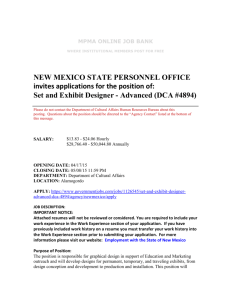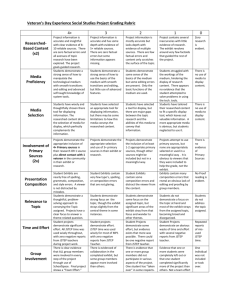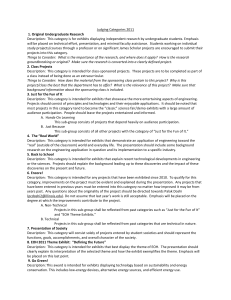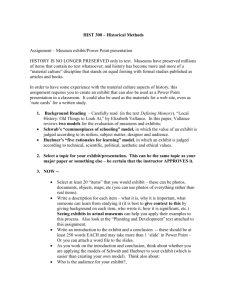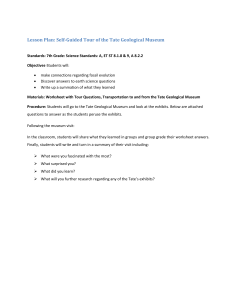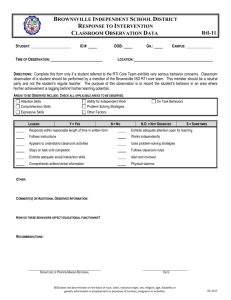Open Pathway - Exploratorium
advertisement
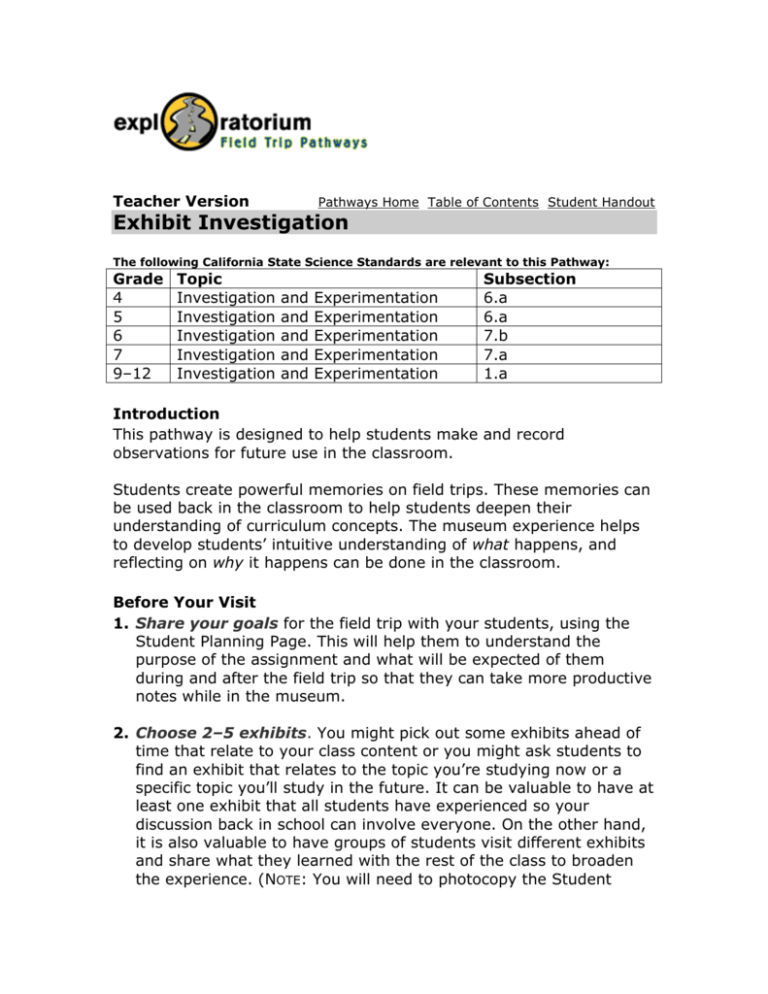
Teacher Version Pathways Home Table of Contents Student Handout Exhibit Investigation The following California State Science Standards are relevant to this Pathway: Grade 4 5 6 7 9–12 Topic Investigation Investigation Investigation Investigation Investigation and and and and and Experimentation Experimentation Experimentation Experimentation Experimentation Subsection 6.a 6.a 7.b 7.a 1.a Introduction This pathway is designed to help students make and record observations for future use in the classroom. Students create powerful memories on field trips. These memories can be used back in the classroom to help students deepen their understanding of curriculum concepts. The museum experience helps to develop students’ intuitive understanding of what happens, and reflecting on why it happens can be done in the classroom. Before Your Visit 1. Share your goals for the field trip with your students, using the Student Planning Page. This will help them to understand the purpose of the assignment and what will be expected of them during and after the field trip so that they can take more productive notes while in the museum. 2. Choose 2–5 exhibits. You might pick out some exhibits ahead of time that relate to your class content or you might ask students to find an exhibit that relates to the topic you’re studying now or a specific topic you’ll study in the future. It can be valuable to have at least one exhibit that all students have experienced so your discussion back in school can involve everyone. On the other hand, it is also valuable to have groups of students visit different exhibits and share what they learned with the rest of the class to broaden the experience. (NOTE: You will need to photocopy the Student Investigation Page to correspond to the number of exhibits the students will visit.) During Your Visit 1. Please plan for unstructured time during your field trip. Leaving about half of your total field trip visit unstructured allows students to follow their own interests while exploring the museum. 2. Groups of 2 or 3 work well for this pathway. 3. Remind students how many exhibits they should be visiting, and make sure they have a Student Investigation Page for each exhibit. 4. For each exhibit your students visit, they will answer the following three questions: 1. What do you like about this exhibit? 2. Write or draw about this exhibit to help you remember what you liked about it later. Use these questions as guidelines: • What did you notice? • What did you try? • What happened? 3. Your class has a goal for this field trip. How does this exhibit tie in with that goal? After Your Visit 1. Students should keep this pathway on file for future use in the classroom when related curriculum concepts arise. This pathway will be a valuable tool for helping students remember what they experienced and observed at exhibits, and what they found interesting. 2. Have a class discussion after the field trip. Here are a few ideas for structuring the discussion. • Jigsaw: Break students into small groups. In each group, each student should have visited a different exhibit or set of exhibits. Have students share their pathways with each other and discuss how each of their experiences fits into the curriculum goals. • Student presentations: Have a few students who visited different exhibits present their pathways to the class. Have other students reflect back what they hear about what is interesting about the exhibits and how they relate to the curriculum goals • Whole Group: As a class, discuss shared experiences in the museum. 3. Use this pathway to begin a longer-term project. The responses to the first question, “What do you like?” should serve as a launching point for further questioning and investigation. This question emphasizes the value of a personal experience rather than a right answer. Responses to the second question should serve as a reference to help students remember the experience and details of the exhibit. ©Exploratorium
